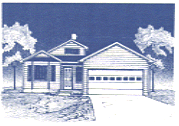| February
1999 |
From the desk of ...
Arthur S. Lazerow |
Polybutylene
Alert!
Polybutylene (PB) piping continues to be a serious concern in real estate
transactions By now, most Realtors can identify PB piping. Yard service piping is a
turquoise colored plastic pipe. Interior PB piping is gray plastic.
The PB class action suit established a settlement fund to repair or replumb leaking PB
piping. Unfortunately, coverage periods are expiring for many homes. Commencing with the
date of installation, there is a ten-year limitation for coverage on exterior house
service PB pipes, a seventeen-year limitation for PB pipes with metal insert fittings, and
a fourteen-year limitation for PB systems with plastic insert fitting. Interior systems
with metal bands are not covered at all.
PB piping can be a serious detriment to a a home's value and often results in a negative
buying decision. When PB is observed at a home inspection, we will identify the material
to our client, explain its use and its history of failure, and encourage our client to
make an informed purchase decision by getting additional information from either the class
action suit administrator or from a local plumber.
Realtors should be careful not to minimize this issue when working with buyers. For
additional information, ask your plumber about polybutylene piping or call the Consumer
Plumbing Recovery Center at 1-800-876-4698
|

|
573 Lancaster Place
Frederick, Maryland 21702
Metro 1-800-822-7200
301-662-6565 |
Full Fee Refund
IF SALE DOESN'T CLOSE |
|
A
Guide To Maximize
Garage Door Safety |

|
We urge homeowners to check
the condition and operation of their garage doors and openers!
Garage-door openers that do not automatically reverse should be
upgraded or replaced with new openers that do reverse. To properly check the garage door,
the opener must be detached from the door; on most openers manufactured since 1982 a
quick-release mechanism is provided which permits the systems with plastic insert fitting.
Interior systems with metal bands are not covered at all. opener to be removed.
1. Ensure balance. A properly operating garage door
is balanced so the door will stay in place when stopped in any partially open position.
The door should not stick or bind when open or closed. If doors are not balanced or if
they bind or stick, they should be serviced.
2. Check the door's automatic reversing. Place a two-inch wooden
block on the floor of the garage in the door's path. if the door does not properly reverse
on striking the block the unit should be disengaged until repairs are made or a new
automatic door opener is installed.
The opener must do more than stop. Some old openers are equipped with a mechanism that
only stops the closing door when it strikes an object. Safer models will also reverse the
door.
3. Install additional protection. For even more protection against
entrapment, use an automatic electric eye installed near floor level to reverse a closing
door automatically whenever an object crosses the door's path. Companies that install
garage-door openers can also install these safety devices.
4. Schedule inspections. Homeowners shot inspect garage door and the
operation ( door openers every 30 days to verify that the system is functioning properly.
Hardware and fittings should be checked to keep the door on track at all times. Should a
hazard exist, the opener should be disconnected from the door as specified in the owner's
manual until the needed repairs are complete.
5. Position the wall switch with care. Homeowners should locate the
wall switch in the garage as high as practical above the floor in an effort to restrict
children's use of the automatic garage door. Remote-control devices should be kept locked
in the car away from children. Parents should also warn their children about the potential
hazard.
|
|
|| Next Page || Back to Index Page ||
Alban Home || |
|
|
|